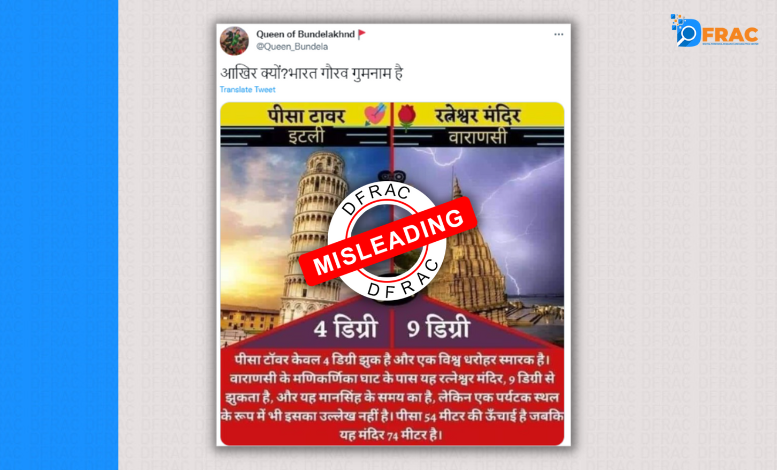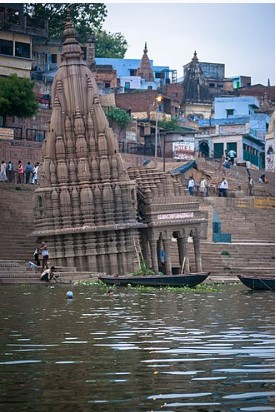An infographic of a comparison between Ratneshwar temple and the Tower of Pisa is going viral on the internet. Sharing the infographic, a Twitter user named Queen of Bundelekhnd wrote, “Why? India’s pride is hidden? {English Translation}
Soon, this tweet got viral with more than thousands of likes.
Fact Check
To the veracity of the claim, the DFRAC team searched about both the monuments: their specifications as well as historical value.
The leaning tower of PISA is a freestanding bell tower, of Pisa Cathedral. It is a UNESCO World Heritage site famous for its 4-degree tilt. According to leaningtowerpisa.com, The height of 56.7 meters (rounded by Google at 57m) is measured from the lowest point on the base to the highest point on the top. At its lowest point, the Tower measures 55.9m. However, the Tower is taller than that! Since its foundation is sunk into the ground (about 2 meters deep at the lowest point) the total height of the Tower would be 58.36 meters. The construction of the structure began in the 11th century but was completed in the 14th century.
On the other hand, the Ratneshwar Mahadev Temple, also known as Kashi Karvat , is situated at Manikarnika Ghat of the holy city Varanasi. The temple, known for its tilt of 9 degrees towards the back side (northwest), and its garbhagriha is generally below the water much of the year, except for a few months during the summer. The actual time of the construction of the monument is unknown but the historical evidence suggests that it was built during the time of Raja Mann Singh.
According to Wikipedia, the height of the temple is 74 feet.
Conclusion
The height of the Ratenshwar Mahadev Temple is not 74 m as claimed in the viral infoghraphic. It is not taller than the leaning Tower of Pesa.
Histoical monument like the leaning tower of Pisa or the Ratneshwar Mahadev temple are historical heritages of great value for the mankind. But some social media users are quoting wrong fact and comparing and misleading people.
This is not the first time such claimes were viral on the social media platforms. These types of claims are prevailing for years. Some of the old claims are given below.







